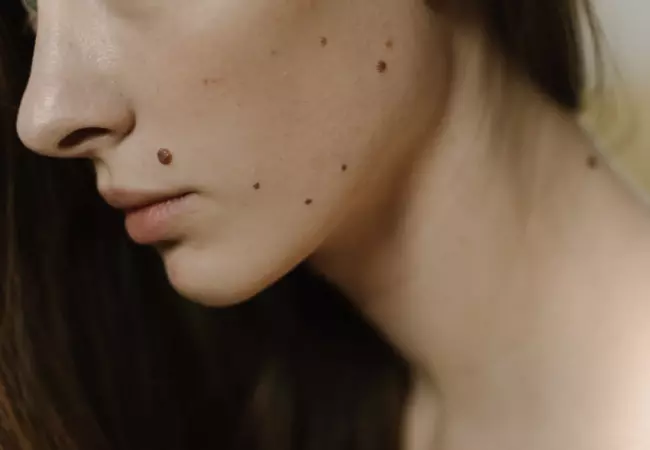Six Things You Need To Know About A Mole Or A Wart On Your Face

Have you ever wondered if the mole or wart on your face is something you should worry about?
Most moles and warts on the face are normal. However, any changes in appearance or texture may indicate something else. In this article, we share six things you need to know about the mole or wart on your face, and when you need to talk to your doctor.
Six Things to Know about Mole or Warts on Face
Moles and Warts Never Cause Pain, But They May Cause Itching or Irritation
Moles and warts can be uncomfortable, but they are never painful. Instead, the discomfort can be merely an itch or an irritation. Warts, in particular, can be itchy because of the dry skin surrounding the area.
1: Most Moles and Warts Do Not Turn Into Skin Cancer
Although a sudden skin growth such as a mole or a wart can be worrisome, there is no reason to be alarmed. Most of the time, moles and warts do not develop into skin cancer. However, if you suspect your moles and warts to indicate a more serious condition, talk to your doctor for advice.
2: Consult to Dermatologist
If you have a mole or wart that itches, bleeds, spreads to other parts of your body, or grows over time, have a dermatologist look at it.
Some moles or warts can itch, bleed, or even spread to different parts of your body. If they do not go away on their own or if they continue to provide discomfort, it’s time to get them checked by a skin specialist. A dermatologist can assess your mole or wart, make a proper diagnosis, and prescribe an appropriate treatment.
3: Some Moles Will Change Into Cancerous Tumors
There are many different types of moles and only some will change into cancerous tumors. In rare cases, a mole can turn cancerous. When it does, you can usually tell by checking if its shape, size, or color has changed. If you notice changes in your mole’s appearance, consult your dermatologist for a thorough assessment.
4: Moles Removing is Not Complicated
Removing a mole or a wart is not usually a complicated process. Most of the time, moles or warts do not have to be removed. Moles can be harmless and warts can usually go away on their own. However, when they start to become suspicious or bothersome, dermatologists or skin specialist recommend having them removed by a professional. The procedure is relatively simple and requires either a surgical excision or a surgical shave.
5: The Risk of Cancerous Lesions
While most moles and warts are benign (non-cancerous), there is always a risk of them developing into cancerous lesions if left untreated. Although most moles and warts are mostly harmless and non-cancerous, it is important to check for any changes in their appearance or texture. If you notice any changes or if you feel continuous discomfort, talk to your dermatologist right away.
6: Make Ensure the Safety
It is important to get any unusual bumps on the face checked out by a healthcare provider as soon as possible to ensure their safety. Many skin cancer symptoms go unnoticed. To reduce the chances of skin complications, consult your doctor right away if you notice any suspicious skin growth like an abnormal mole or wart.
Whether or not the mole or wart on your face indicates something serious, don’t take your skin for granted. Talk to a dermatologist immediately if the growth on your skin is making you uncomfortable.



